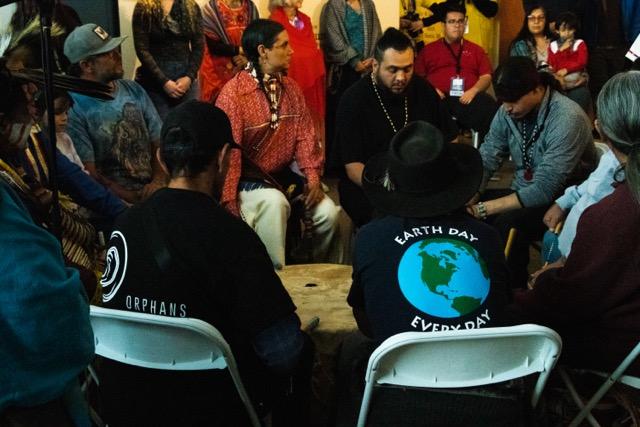
A foundation noted for creating a way to replicate the fragile models of Italian Renaissance artist Michelangelo Bounarroti’s “bozzettis” through laser scanning and rapid prototyping technology is bringing its work to Pueblo.
Harry Spell, of the Harry and Karly Spell Foundation, has agreed to host an art and technology event at Colorado State University-Pueblo and Pueblo Community College in late March 2016.
An exhibit featuring the Michelangelo models, “Touched by the Hands of God: Michelangelo’s Models” is currently on display at the Sangre de Cristo Arts Center in downtown Pueblo until May 29, 2016.
The pieces that are on display in the King Gallery of the art center are the Nudo Virile (David), Torso Virile (Louvre Slave), Dio Fluviale (River God), Due Lottatori (Two Wrestlers), Nudo Femminile (Female Nude) and Crocifisso (Crucifix).
“These have only been shown one or two times in the United States and for us to have them here is amazing,” said Don Banner, a sponsor of the exhibition.
Banner, who does legal work for the CSU-Pueblo Foundation, said these models were used as concepts when Michelangelo was preparing to build his larger sculptures. Known as bozzettis, these models were thought to have been destroyed but after Michelangelo died, somebody had remodeled the house where his studio was located and walled it up.
The house is currently located in Florence, Italy and serves as the Casa Bounarroti, a museum dedicated to the artist. The original models are currently protected in glass cases at the museum.
“The bozzettis are very rare in that the originals are made of wax, clay and wood so they are very fragile. So for hundreds of years, they’ve never been able to travel,” said Jim Richerson, executive director of the Sangre de Cristo Arts Center.
According to Banner, in the 1800s, somebody who was remodeling the house discovered the false wall and found his studio with six of the bozzettis.
“They weren’t a 100 percent sure they were his,” Banner said. “I mean it was his house but for a couple hundred years, nobody had seen him so they weren’t sure but then they found a painting done by another artist contemporaneously with Michelangelo’s life of his studio and there were the bozzetti.”

“So it proved these are them, these are Michelangelo’s! There are the things he’s made,” he said.
Spell used his five-step process to re-create these models by laser scanning the small sculptures without touching them. He was then allowed to take those digital scans, create the rapid prototyping and re-caste it into bronze castes of the original models.
“Now these can travel and people can see them. Since they’re digital scans, they’re as accurate as accurate can be,” Richerson said.
Richerson said he believes these castes have made art more accessible for people and that they give people a clue of how Michelangelo was thought, especially in the 21st century.
“There’s subtleties and nuances when he’s thinking conceptually what he’s doing that changed in the model, so it’s another step in just making the process more alive and exciting,” he said.
“You can actually feel what Michelangelo felt when he created them,” Banner added.
With Spell’s use of technology, Richerson said that it brings art and science back together, which was a key part in the Renaissance.
While the exhibit is on display, the center will be having “Touch Tuesdays” where touching the pieces is encouraged for a more complete visitor experience. This event was inspired by Richerson, when he showed the Bozzettis in Peoria, Illinois where he did a couple of programs for the visually impaired.
“It was very cool to hear people talk about, through a different sense, their experience with the art. So when Dr. Spell was here, I said, ‘wouldn’t it be cool if we could have touch them Tuesdays?’ And he said sure as long as people take their jewelry off,” Richerson said.
On one side of the exhibit, displayed are images of the technical process that Spell used to create the castes. Another wall shows a timeline of Michelangelo’s life so that visitors are able to take a glimpse of what went on in Michelangelo’s life when building the models.
A public reception will be held for the exhibit Nov. 6, from 4:30 p.m. to 7 p.m. Admission to the art center is $8 for adults and $6 for children.
“I think art is an essential part to living. It is an essential part to engaging our senses. I think art informs our senses, that it makes a person a richer person no matter if they’re an engineer, a doctor or an artist. It just gives life more dimension,” Richerson said.










Don Banner • Oct 23, 2015 at 8:57 pm
Nice article MICHELLE! Thanks for sharing the link.